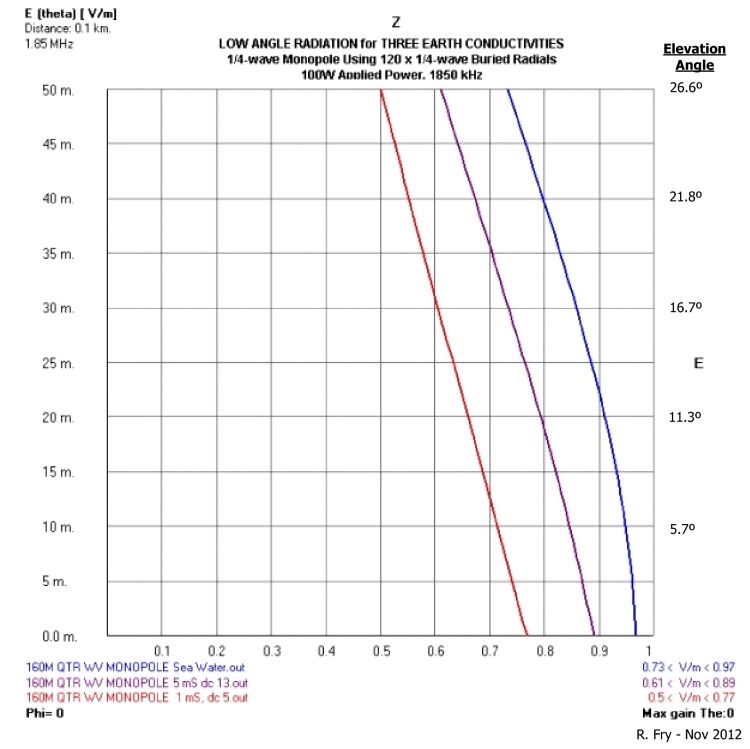For consideration / comment...
Radiation launched by vertical monopoles of 5/8-wavelength and less in height always is maximum in the horizontal plane -- regardless of earth conductivity and the number/length of buried radials they use.
This point is illustrated in the NEC4 analysis shown/linked below, comparing low-angle radiation for sea water, average, and poor earth conductivity. The shapes of these patterns (their relative fields) are essentially the same, even though the lower conductivities produce lower fields.
The fields present at these elevation angles below ~ 26 degrees can continue on to reach the ionosphere, and given the right conditions return to the earth as skywaves. Radiation from the lowest angles provides the greatest single-hop skywave range.
The belief that monopoles need a near-perfect ground plane to radiate high relative fields at low elevation angles is a common interpretation when considering only the far-field patterns shown in NEC and in antenna textbooks as the shape of the fields actually leaving the monopole. But they are not -- they are only what remains of those fields at an infinite distance over an infinite, flat ground plane.

Radiation launched by vertical monopoles of 5/8-wavelength and less in height always is maximum in the horizontal plane -- regardless of earth conductivity and the number/length of buried radials they use.
This point is illustrated in the NEC4 analysis shown/linked below, comparing low-angle radiation for sea water, average, and poor earth conductivity. The shapes of these patterns (their relative fields) are essentially the same, even though the lower conductivities produce lower fields.
The fields present at these elevation angles below ~ 26 degrees can continue on to reach the ionosphere, and given the right conditions return to the earth as skywaves. Radiation from the lowest angles provides the greatest single-hop skywave range.
The belief that monopoles need a near-perfect ground plane to radiate high relative fields at low elevation angles is a common interpretation when considering only the far-field patterns shown in NEC and in antenna textbooks as the shape of the fields actually leaving the monopole. But they are not -- they are only what remains of those fields at an infinite distance over an infinite, flat ground plane.

